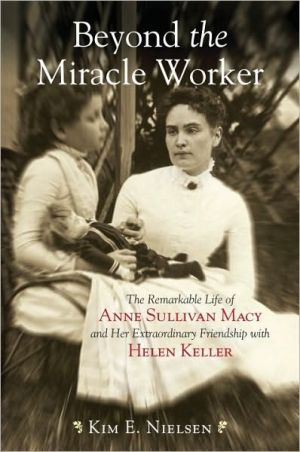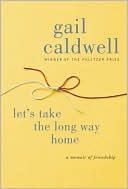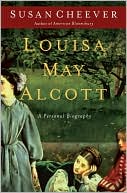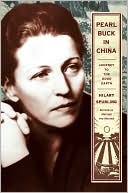Beyond the Miracle Worker: The Remarkable Life of Anne Sullivan Macy and Her Extraordinary Friendship with Helen Keller
After many years, historian and Helen Keller expert Kim Nielsen realized that she, along with other historians and biographers, had failed Anne Sullivan Macy. While Macy is remembered primarily as Helen Keller's teacher and mythologized as a straightforward educational superhero, the real story of this brilliant, complex, and misunderstood woman, who described herself as a "badly constructed human being," has never been completely told.\ Beyond the Miracle Worker, the first biography of Macy...
Search in google:
After many years, historian and Helen Keller expert Kim Nielsen realized that she, along with other biographers, had shortchanged Anne Sullivan Macy, a woman remembered primarily as a miracle worker. The story of this brilliant, complex, and misunderstood woman who described herself as a “badly constructed human being,” has never been completely told. Nielsen’s biography, the first to focus on Macy in nearly fifty years, complicates the typical Helen-Annie “feel-good” narrative in surprising ways. By telling Macy’s life as her story—not Keller’s—it presents a new, gripping tale about a wounded but determined woman and her quest for a successful and meaningful life. Born in 1866 to poor Irish immigrants, the deserted Macy suffered part of her childhood in the Massachusetts State Almshouse in Tewksbury before studying at the Perkins School for the Blind. As an adult, Macy taught Keller, helping her realize her immense potential. Nielsen argues that Macy’s intimate friendship with Keller remained powerful yet later reversed as Macy—floundering with her own blindness, depression, and tumultuous marriage—eventually leaned on her student emotionally, physically, and economically. Beyond the Miracle Worker unravels one of the best known—and least understood—friendships of the twentieth century. Publishers Weekly After writing two books about Helen Keller, historian Nielsen (The Radical Lives of Helen Keller) vowed she "would never again write anything even remotely related to her." Fortunately, she couldn't help herself: upon reviewing the letters of Keller's teacher, Anne Sullivan Macy, Nielsen "became convinced [we] had shortchanged the woman known only as the teacher of Helen Keller." Through Sullivan's correspondence and notes, Nielsen remedies this lack with a "lightly fictionalized" autobiography drawing on the written impressions of Keller and others. Nielsen devotedly chronicles Sullivan's emergence as an opinionated and intelligent if troubled woman who was born poor, afflicted early on with a debilitating eye disease and abandoned to an almshouse after her mother's death. Luck and innate ability plucked her out of the asylum and placed her in the classroom. But Nielsen concedes that Sullivan's relationship with Keller took center stage in both the public consciousness and private life. Citing historical uncertainty, Nielsen self-consciously skims over Sullivan's early teaching methods, including that iconic moment at the water pump-the very moment we all wonder about. 4 b&w photos. (May)Copyright © Reed Business Information, a division of Reed Elsevier Inc. All rights reserved.
Introduction ixChapter 1 Feeding Hills, 1866-1876 1Chapter 2 Tewksbury Almshouse, 1876-1880 13Chapter 3 Perkins, 1880-1886: Part One 37Chapter 4 Perkins, 1880-1886: Part Two 57Chapter 5 Becoming Teacher, 1887 73Chapter 6 Tuscumbia, 1888-1891 93Chapter 7 The Battle for Helen, Round 1, 1891-1894 111Chapter 8 The Battle for Helen, Round 2, 1894-1900 135Chapter 9 Radcliffe, 1900-1904 163Chapter 10 John, 1904-1914 179Chapter 11 On the Road, 1914-1924 201Chapter 12 The American Foundation for the Blind, 1924-1930 225Chapter 13 Concluding 1930-1936 249Conclusion 267Acknowledgments 269Notes 271Index 295
\ Publishers WeeklyAfter writing two books about Helen Keller, historian Nielsen (The Radical Lives of Helen Keller) vowed she "would never again write anything even remotely related to her." Fortunately, she couldn't help herself: upon reviewing the letters of Keller's teacher, Anne Sullivan Macy, Nielsen "became convinced [we] had shortchanged the woman known only as the teacher of Helen Keller." Through Sullivan's correspondence and notes, Nielsen remedies this lack with a "lightly fictionalized" autobiography drawing on the written impressions of Keller and others. Nielsen devotedly chronicles Sullivan's emergence as an opinionated and intelligent if troubled woman who was born poor, afflicted early on with a debilitating eye disease and abandoned to an almshouse after her mother's death. Luck and innate ability plucked her out of the asylum and placed her in the classroom. But Nielsen concedes that Sullivan's relationship with Keller took center stage in both the public consciousness and private life. Citing historical uncertainty, Nielsen self-consciously skims over Sullivan's early teaching methods, including that iconic moment at the water pump-the very moment we all wonder about. 4 b&w photos. (May)\ Copyright © Reed Business Information, a division of Reed Elsevier Inc. All rights reserved.\ \ \ \ \ Library JournalThe lives of Helen Keller and her teacher, Anne Sullivan Macy, were so entwined that it is impossible to write about one without the other. Nevertheless, in this concise biography Nielsen (history & women's studies, Univ. of Wisconsin, Green Bay; The Radical Lives of Helen Keller) succeeds admirably in keeping the focus on Macy, adding to our understanding of Macy's tragic childhood in the Tewksbury, MA, almshouse, her schooling at the Perkins Institution for the Blind, her marriage to and separation from John Macy, and her struggles to hide the extent of her own disability. Macy's complexity is revealed, particularly in her struggle to remain the guiding force in Keller's life amid efforts by educators at Perkins and other schools to gain control of Keller and to benefit from her fame. This book will join works such as Lorena A. Hickok's The Touch of Magic, Joseph P. Lash's Helen and Teacher, and Dorothy Herrmann's Helen Keller: A Life as essential reading for those interested in Macy or Keller. Suitable for most public libraries and for academic libraries with strong collections in biography, special education, or the history of disabilities.\ —Linda V. Carlisle\ \ \ \ Kirkus ReviewsA largely unsuccessful attempt at a full-scale biography of the difficult, unhappy woman whose life story is inseparable from that of Helen Keller. Called "Teacher" by Keller and popularly known as "The Miracle Worker," Anne Sullivan was born into poverty in the late 1800s and suffered intense psychological and physical miseries during a lifetime in which she was mostly dependent on others. Sent to an almshouse by her widowed father at age ten, she lived in the grimmest of conditions until admitted to the Perkins Institution, a famous school for the blind in South Boston. She was not completely blind, but her eyes required numerous surgeries and her sight was always precarious. Her life with Keller began after her graduation from Perkins, and from age 20 until her death she remained with the famous deaf-blind woman. "They lived intricately intertwined lives," writes Nielsen, "were deeply dependent upon one another, and loved one another profoundly." Sullivan's initial role as governess and teacher is well known, but as Nielsen (History and Women's Studies/Univ. of Wisconsin, Green Bay; Helen Keller: Selected Writings, 2005, etc.) demonstrates, that role evolved over time. It was a painful process, as the stubborn, defensive and proud woman struggled to establish herself as a serious and capable educator. As an adult, Keller became the duo's breadwinner, supporting them both financially for many years. Marriage to the much younger John Macy came late in Sullivan's life, and just how it worked for the threesome is unclear. Eventually the Macys separated, but Sullivan and Keller stayed together until the end. Unfortunately, many of the details are murky, and Nielsen is forced to acknowledgethat no record of events exists and that her subject's reactions can only be imagined. A sympathetic account hampered by inadequate and often contradictory source materials.\ \








